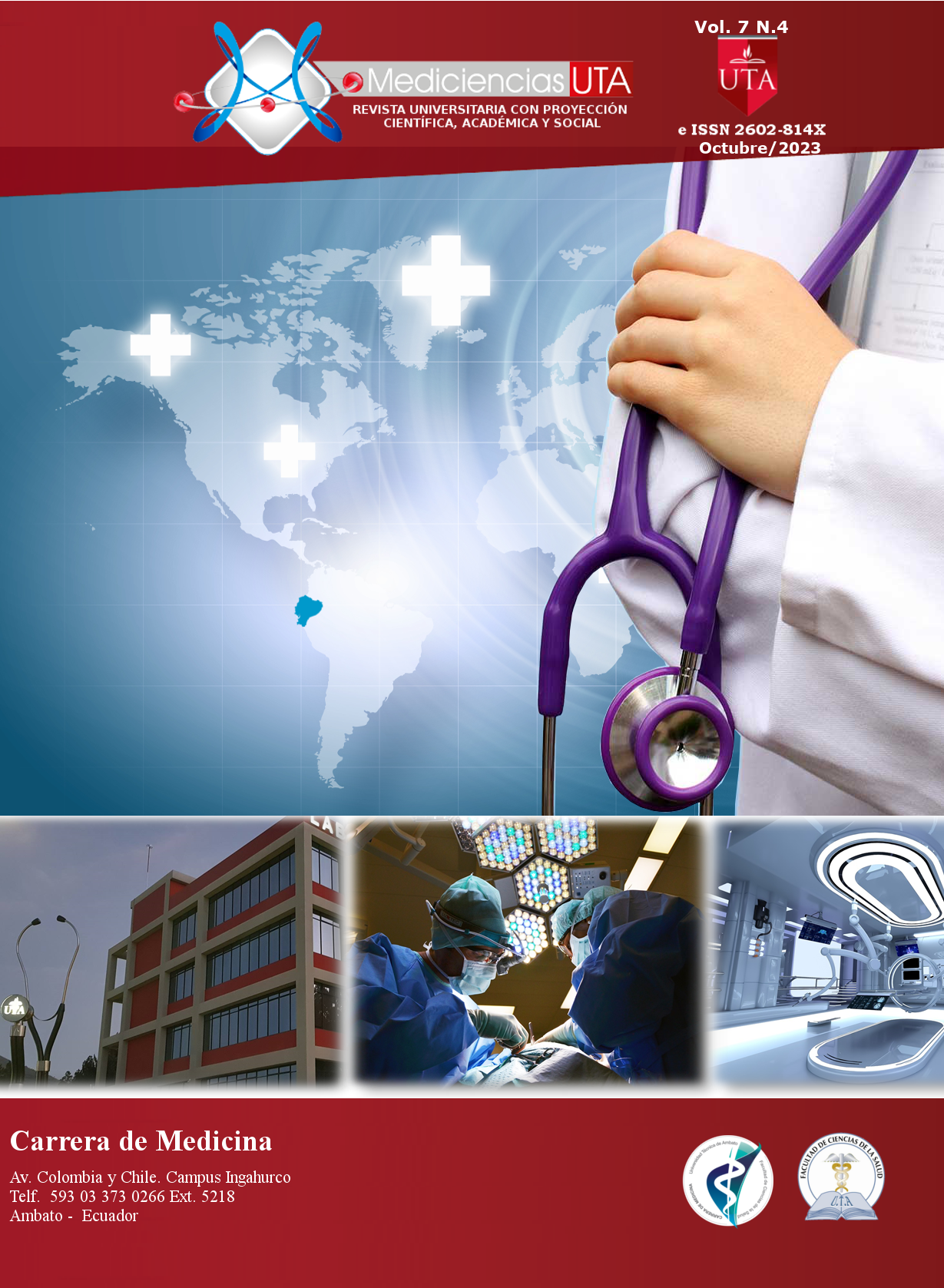Lemierre's syndrome. A systematic review
Main Article Content
Abstract
Introduction: Lemierre syndrome, also called "postanginal septicemia or necrobacillosis", is a rare and poorly understood pathology, which results as a complication of an oropharyngeal or extrapharyngeal infection. The most frequent causative agent is Fusobacterium necrophorum, followed by Fusobacterium nucleatum; it may also be associated with other anaerobic bacteria, Streptococcus viridans, staphylococci, klebsiella pneumoniae, Bacteroides pyogenes and Bacillus circulans, cases of Staphylococcus aureus have also been reported. methicillin resistant in pediatric population and in COVID-19 viral infection with Lemierre syndrome. Objective: To describe Lemierre syndrome, its diagnosis and clinical treatment. Materials and methods: We chose medical articles published in the last 5 years that met the inclusion and exclusion criteria, obtained from the following databases: Pubmed, Google Scholar, ScienceDirect, Mendeley, IntechOpen, Wiley Online library. The web pages of the journals were reviewed, where the availability of articles for screening last consulted on October 2, 2023 was reviewed. Results: The management of Lemierre syndrome consists of blood cultures and early antibiotic therapy at high doses. Within the scheme, it usually includes a beta-lactam with beta-lactamase inhibitor + metronidazole, or monotherapy with clindamycin, for a minimum period of 4-6 weeks. Emergency surgical excision, tympanomastoidectomy, and drainage of the abscess are sometimes necessary. With the result of the blood culture, the antibiotic is optimized in critical patients. In cases of resistant germs, there are other regimens including vancomycin, ceftazidime, and metronidazole. Conclusion: Lemierre syndrome typically affects immunocompetent children, adolescents and young adults. The clinical picture in its first stage manifests as a persistent febrile picture, with a history of previous acute bacterial pharyngotonsillitis, in addition to other symptoms such as polyarthralgia, erythematous skin lesions, odynophagia and hyporexia that evolves to septic thrombophlebitis and septic shock or generalized thrombosis. The most commonly used diagnostic methods are blood cultures, Doppler ultrasound of neck vessels, echocardiogram, computerized axial tomography or magnetic resonance with intravenous contrast. Treatment is based on antibiotics such as beta-lactams accompanied by anticoagulants in specific cases
Downloads
Article Details

This work is licensed under a Creative Commons Attribution-NonCommercial-ShareAlike 4.0 International License.



